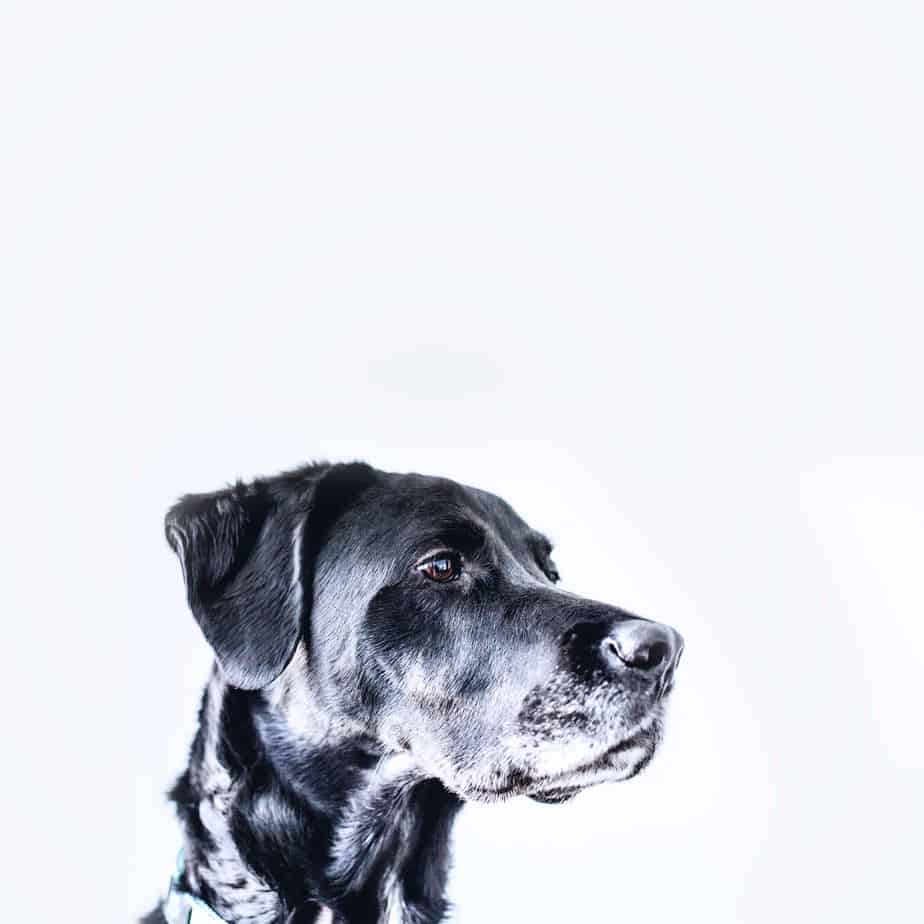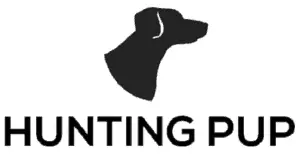
When pricing out a hunting dog, you will see quite a range of prices. These are some typical ballpark prices for puppies.
- Retrievers – Labs, Retrievers $500 – $3500. (I know, quite the range, but with Labradors especially there is a huge price range depending on aesthetics and pedigree).
- Pointers – English Setters, Irish Setters, English Pointers, etc. $250 – $1200.
- Versatile – Griffons, PudelPointers, German Shorthaired Pointers, etc. $700 – $2500.
- Hounds – Redbones, Coonhound, Bluetick, etc. $250 – $1200.
These are typical prices you could expect to pay for dogs of these types. There will be outliers on each side of these price ranges.
What causes one dog to be worth more than another?
Factors that contribute to the price difference in hunting dogs include:
- Rarity of the breed – some rare versatile breeds demand a large sum.
- Aesthetics – including color. Red and Silver labs can fetch a larger sum than their blond, chocolate, and black brothers and sisters.
- Pedigree – pups with parents that have earned trail titles demand larger sums.
- Location – pups will cost more in certain locations.
- Notoriety – pups from a well-known breeder will demand a larger sum.
- Training – how much training a dog has will factor into the price. Expect to pay more for dogs that have started training (Started Dogs) and those that are fully trained (Finished dogs).
Lets dog into these, there are several different reasons why some dog breeds cost more than others. Extreme popularity, for example, can increase the cost of some breeds. Reputable breeders who truly care about their dogs will limit the number of times their dogs are bred to safeguard their health. Registries like the AKC also have rules regarding breeding. For example, the AKC states that female dogs should not be bred if they are under eight months old or over 12 years old. Female dogs generally go into heat twice a year. Reputable breeders thus breed only so many puppies a year, regardless of how wildly popular a given breed is.
People who raise dogs belonging to popular breeds are protective of their charges and will want to screen prospective owners to ensure their suitability. By requiring a prospective owner to pay a deposit or otherwise jump through hoops for the privilege of buying a puppy, the breeder will attempt to make sure that the client is truly committed to owning and caring for a dog.
Some breeds are also rarer than others. While common breeds like Labrador Retrievers or hound mixes can often be found in animal shelters, other, less common breeds can only be bought from a breeder. Similarly, new breeds tend to cost more than familiar and established breeds. Also, some breeds have smaller litters than others, and that also increases their price.
Within any given breed, some bloodlines will be worth more than others. A puppy born to parents known for their excellent conformation, beautiful coats, and prowess in the show ring, agility ring, or field trial will cost significantly more than one born to less outstanding parents. A field trial, for the record, is a competitive sport that tests a hunting dog’s skills such as retrieving waterfowl and bringing them back to their owner. Field trial champions can be considered the canine equivalent of champion racehorses and will be correspondingly expensive, and so will their puppies.
What are titles, like competition or trail titles earned by a dog’s parents or grandparents, in the lineage worth?
A purebred dog will have a pedigree or family tree, and that pedigree will include information about the dog’s parents, grandparents, and more distant ancestors. The names of the dog’s parents are typically to the right of the dog’s name, and there will be information about them below their names – including titles won in competitions.
Finding information about competitions, unfortunately, requires interpreting a bunch of abbreviations and acronyms. To make matters even more complicated, different breeds compete in different events and can earn different titles.
Example: AKC show abbreviations include the following: CH, which indicates the dogs is a show champion which has nothing to do with hunting. However, you might see a 5X CH on the pedigree of an English Setter in the FDSB, which would indicate the dog is a five-time winner of an all-age trail, which would put it in the upper echelon of pointing dogs.
Common abbreviations you may see on a pedigree.
American Kennel Club (AKC) – Field Trails
- NFC – National Field Champion
- FC – Field Champion
- NAFC – National Amateur Field Champion
- AFC – Amateur Field Champion
American Kennel Club (AKC) – Hunt Test
- MH – Master Hunter
- SH – Senior Hunter
- JH – Junior Hunter
American Field (AF)
- CH – a distinction given by wining a champion or runner up champion at a sanctioned Championship.
North American Versatile Hunting Dog Association (NAVHDA)
- VC – Versatile Champion (best of best)
- UT – Utility
- P1 – Prize 1 (best)
- P2 – Prize 2
- P3 – Prize 3
- NA – Natural Ability
- P1 – Prize 1 (best)
- P2 – Prize 2
- P3 – Prize 3
Does cost of a hunting dog change significantly in different parts of the US?
Just as the cost of living varies in different parts of the United States, the price of a hunting dog does as well. So does the cost of caring for a dog. A veterinarian in New York City charges more for their services than does one in West Virginia.
Regardless of state, shelters are always less expensive than breeders and are thus a good option for somebody who wants a pet. We recommend that anybody looking for a hunting dog research their chosen breed to decide if they need to go to a breeder. The advantage of doing so is that they will be able to learn about the puppy’s parents; if they were good hunters, the puppy probably would be as well.
With rare breeds or particularly well-bred dogs, it is common for dogs to be shipped to new owners. This can be done by shipping the dog as cargo in commercial airplanes. You do not need to accompany the dog on the flight. Different airlines have very different processes for doing this so be sure to research the topic before buying a dog across the country or world.
What is typically the most expensive hunting dog breed
Very well breed Labrador retrievers can tip the scales as some of the most expensive hunting dogs. (Topping $5,000 for a puppy). Generally, NAVHDA versatile breeds are the most expensive hunting dog as they are usually rarer and certain breeders rise to the top by consistently producing great dogs and attract top dollar for their puppies. Typically, expensive breeds in the versatile category are Small/Large Munsterlander, German Longhair, Pudelpointer, Spinone, Wirehaired Pointing Griffon, and Bracco Italiano.
What is typically the cheapest hunting dog breed?
The Beagle, which can cost as little as $200, is both the least expensive hunting do and the least expensive dog breed, period. Its short hair means its grooming needs will be similarly inexpensive. The Beagle is a scent hound that was originally bred to hunt rabbits.
Other inexpensive hunting dogs include the Plott Hound ($275), Harrier ($300), Rat Terrier ($350), Black and Tan Coonhound ($350), and English Setter ($350). Many of the inexpensive breeds have short hair and few health problems, so the cost for of their care is also generally low.
What is the record ever spent to purchase a hunting dog?
The most expensive dog ever was a Tibetan Mastiff bought by a Chinese multimillionaire in 2011. It cost ten million Chinese yuan or over 1.5 million US dollars.
The world’s most expensive hunting dog was a yellow Labrador Retriever called Lancelot Encore, who was also the first dog to be commercially cloned. His owners paid $155,000 to have their beloved dog Lancelot cloned. They went on to breed Lancelot Encore, who sired eight puppies in his first litter.
How do you know if you are paying the right price for what you are getting?
Best option is to get involved with local hunting clubs and organizations. You will be able to see a variety of dogs from a variety of breedings and pedigrees. If your goal is to have the best hunting dog possible for your needs, getting out and hunting with the parents of the pup you are looking to acquire can be a great way to see the possibilities. Or better yet if you don’t need a puppy, you should look for a started or finished dog that you can fully evaluate and hunt with before purchasing. Some other considerations: as already mentioned, a purebred dog should have a pedigree with information about the dog’s ancestors. An authentic and reliable pedigree should have a seal indicating that it has been certified by the AKC or a similar registry. The pedigree may also have a registration number unique to that dog.
Not all breeders will register their puppies, so you should ask them if they have already registered the dog. If they haven’t, we recommend visiting the AKC website and registering there.
We advise reading the family chart to determine how inbred the dog is. Breeders will sometimes breed dogs to close relatives to ensure that the puppies are born with specific desirable traits. Unfortunately, inbreeding does increase the risk of the puppies developing genetic disorders.
Breeders define inbreeding as mating a dog to an immediate relative, like mating siblings to each other or a son to their mother. In linebreeding, the pup’s sire and dam share a close common ancestor, such as a grandparent. In outcrossing, the sire and dam don’t have any ancestors in common for about three or four generations.
DNA testing is becoming increasingly common. If the dog has undergone a DNA test, there will be a line reading “DNA#:” followed by an identification number. The pedigreed may also include information about whether the dog or its ancestors were tested for genetic problems often found in the breed. German Shepherds, for example, are prone to hip dysplasia. We advise checking to make sure that there is no hip dysplasia in a German Shepherd’s family chart.
Again, the pedigree may provide this kind of information. OFA, for example, stands for “Orthopedic Foundation for Animals,” which has been screening dogs for hip dysplasia since the mid-1960s. They will grade a dog’s hips as Fair (F), Good (G), or Excellent (E). They also screen dogs for elbow dysplasia.
Similarly, EYE means that the dog had and passed an eye exam. In sum, carefully reading the pedigree will you choose a healthy puppy with desirable bloodlines.
Buying a hunting dog is not something to be done lightly. It’s a living animal, and the smaller breeds can have a life expectancy of 15 or more years. We strongly recommend researching the various breeds to find the most suitable dog.
Different hunting dogs specialize in different types of game. Chesapeake Bay Retrievers and Labrador Retrievers are the dogs of choice for duck hunters, for example. The Plott Hound was bred to hunt big game like bears or mountain lions. Name an animal, and there is almost certainly a dog that was bred to hunt it.
